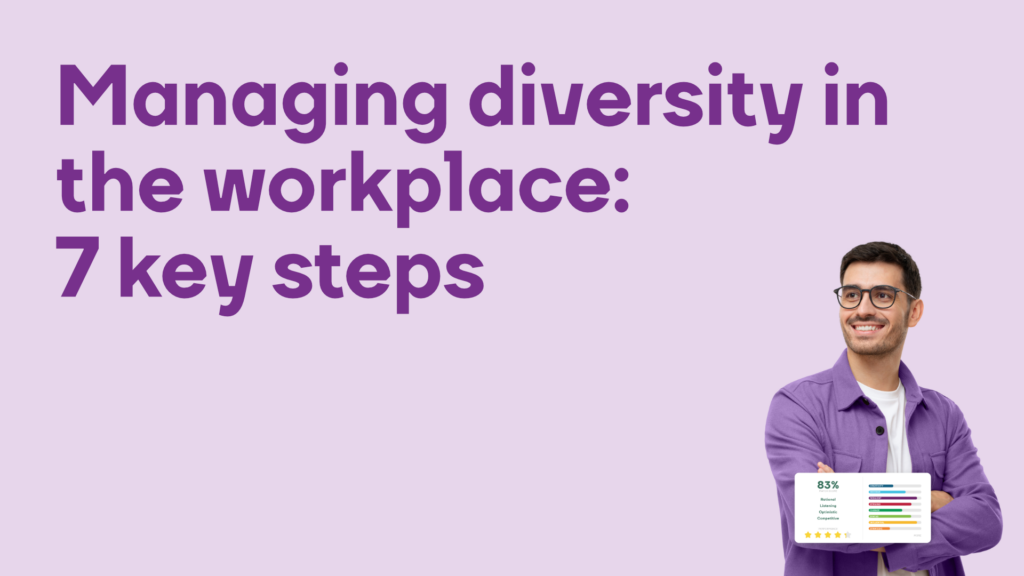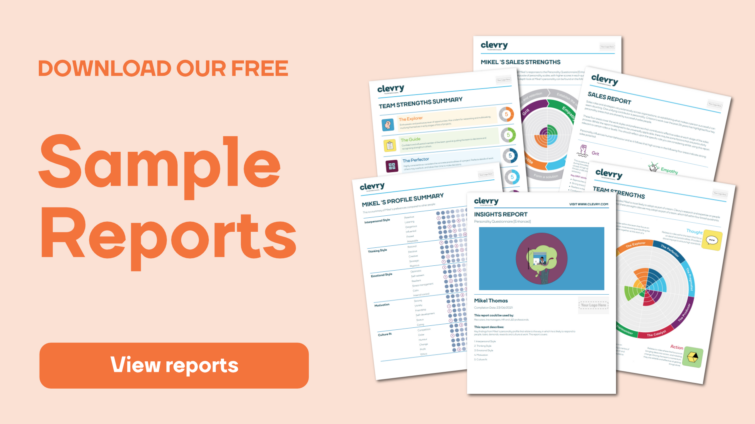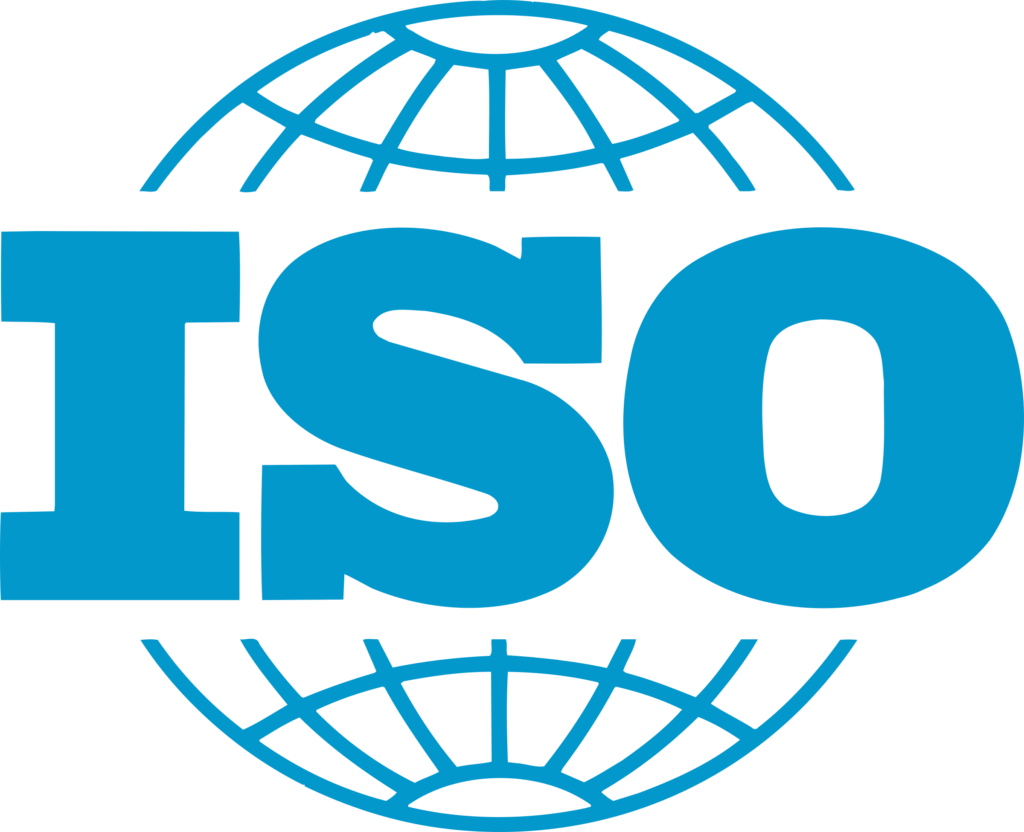What is diversity in the workplace?
Simply put, a diverse workplace is one that gives its employees the freedom to be themselves and values them for their skills regardless of differences. These differences can range from race, religion, age, sexuality, gender, and disability to our unique personality traits.

A diverse workforce can significantly benefit a company’s culture and profits. According to Forbes, companies with diverse teams tend to be more innovative, which leads to more profits. However, someone managing a diverse team can encounter challenges such as culture clashes and language barriers, leading to slower decision-making and communication problems. If you find yourself dealing with these issues while managing a diverse team, don’t stress. This article will highlight seven best practices for managing diversity in the workplace to help you get the best out of your team.
What is an example of diversity management?
A practical approach to diversity management is to create a mentorship program that specifically focuses on promoting diversity and inclusivity within an organisation. Under this initiative, employees from underrepresented groups are matched with experienced mentors, allowing them access to guidance, support, and opportunities.
The program aims to build a more inclusive and equitable workplace by breaking down barriers and providing equal access to growth and development. Mentors serve as advocates who facilitate the navigation of organisational challenges, help mentees explore new opportunities, and offer guidance on career progression.
By prioritising a mentorship program geared toward diversity and inclusion, the organisation demonstrates a commitment to nurturing a culture of equality and fostering professional development. This translates into benefits for individual employees and contributes to a diverse and empowered workforce, leading to heightened creativity, engagement, and overall organisational success.
How to manage diversity in the workplace
1) Communicate effectively
According to Salesforce, employees who feel that their voice is heard in the workplace are over four times more likely to perform at their best than those who feel overlooked. Establishing effective communication at every level is essential for keeping diverse teams engaged, aligned, and performing at their best. To achieve this, HR teams and managers should actively seek feedback from employees and use this to build and maintain a positive work environment. When managing a diverse team, it’s important to ensure staff are informed about procedures, policies, and other key information that will help them better integrate with their team.
2) Create an open-minded work culture
Creating an open-minded organisational culture in the workplace helps employees gain more knowledge, better connect with their colleagues, reduce conflicts, and encourage creative collaboration. These factors add up to a better workplace experience and a better company image.
To foster employee diversity and inclusion, a company must cultivate an environment where staff members accept and embrace each other for who they are. Think of your workplace, and take note of the various backgrounds, cultures, and creeds that make up your team. You’ll likely find that celebrating these differences goes a long way to creating an awesome company culture.
3) Consider leadership training
Managers must promote and embrace diversity from the start so that employees can enjoy a diverse atmosphere. Diversity training can go a long way toward eliminating discrimination, creating a better workplace for all employees, avoiding legal issues, promoting productivity and company growth, and decreasing conflict amongst teams.
However, this is only possible when leaders actively want to take the initiative to embrace leadership training and apply what they learned to roles day to day.
4) Consider sensitivity training
Sensitivity training helps employees and managers understand and respect a wide range of cultures and sensitivities and helps create a harmonious workplace. It’s an effective tool for promoting diversity and cultivating greater self-awareness among employees, enabling them to recognise and address personal biases and prejudices.
Moreover, sensitivity training encourages employees to examine and adjust their perspectives regarding people from various backgrounds, promotes greater understanding and appreciation of diverse viewpoints, educates employees on actions that may be considered offensive and why they are perceived as such, teaches employees effective communication methods for addressing and resolving conflicts with colleagues, and explains how employees can apologise if they have unintentionally offended someone. What’s more, receiving sensitivity training ensures a comprehensive understanding of the value and power of diversity.
5) Report discrimination in the workplace
To effectively manage workplace diversity, the organisation must have zero tolerance for concerns related to a specific person or culture. Establishing appropriate consequences for discriminatory behaviour is important to promote diversity in the workplace, and encouraging employees to report instances of discrimination and biases can help reduce the occurrence of such incidents. Every employee has the right to a respectful and inclusive office environment, so it is crucial to prohibit any jokes or comments that involve derogatory remarks or gestures based on race, religion, sexuality, culture, gender, etc.
6) Build diverse teams
Encouraging collaboration among employees from different backgrounds can nurture their unique identities and contributions. Diverse teams promote respect and camaraderie among members, fostering a sense of unity. Moreover, diverse groups bring a wider range of perspectives and beliefs, recognising the value of each member’s innate talents and insights.
To effectively manage workplace diversity, businesses should embrace and leverage the beauty and strength of having a diverse workforce. This journey begins with inclusivity and by providing equal opportunities to all employees.
7) Hire the right talent
According to Glassdoor research, 67% of job seekers acknowledge the importance of a diverse workforce when considering job offers, with 57% believing that employers should actively strive for more diversity. Embracing a range of talent pools enables companies to quickly identify qualified candidates. To foster a diverse workplace, it is crucial to intentionally seek out individuals from different cultures. This includes ensuring diversity among those in positions of authority who have a say in the hiring and evaluation processes in order to address any biases.
Employers who are committed to managing diversity must set aside prejudices and prioritise the selection of individuals based on their qualifications, competence, skills, and cognitive ability. This approach promotes the creation of a truly diverse workforce.
The bottom line
Creating a diverse workplace helps individuals feel happy and heard, makes your company look better to the public and clients, enhances decision-making and workflows, and creates the perfect breeding ground for fresh ideas.
If you want to get the most out of your diverse team, check out our Diversity and Inclusion Audit. Our diverse group of Business Psychologists, all trained in I&D, will investigate your business selection process, inside and out, and then provide detailed and actionable recommendations that can be implemented to improve your hiring and selection processes.



